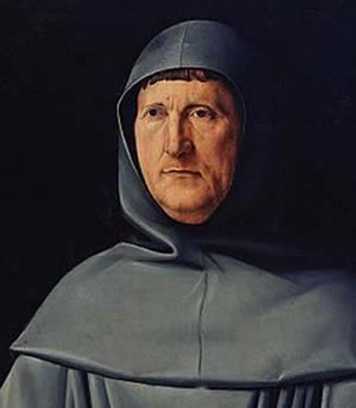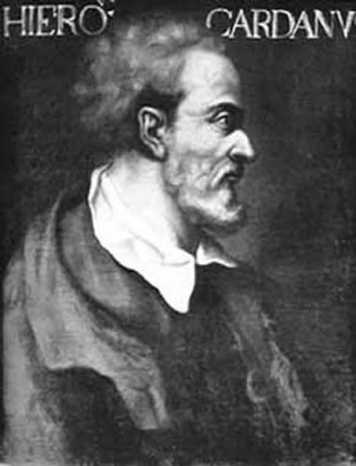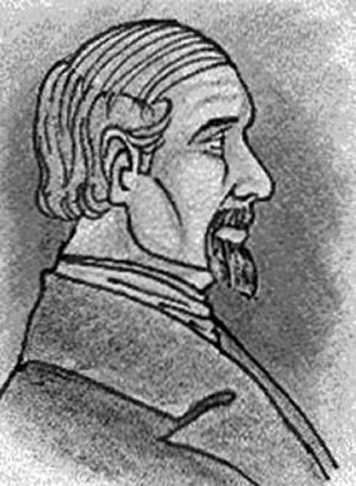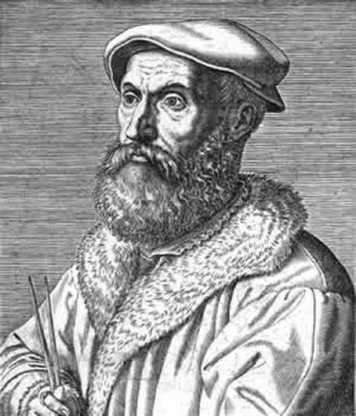Fibonacci's work in the Renaissance

Fibonacci's teachings were taken up in the Renaissance by various scholars though his work was increasingly forgotten.

Fra external page Luca Pacioli was born in Sansepolcro in 1445. As a young man, he left his town of birth and went to Venice where he entered the service of a merchant. There he supplemented his knowledge of mathematics. After his employer's death, he studied theology in Rome and joined the Franciscan Order. Pacioli then began to travel, punctuated by stays at various universities where he taught mathematics. He died in 1517. Pacioli is regarded as one of the most important mathematicians of the fifteenth century.
Mathematical achievements
His works greatly influenced his contemporaries. In Venice he published in 1494 his most famous book, external page "Summa de arithmetica" (1523 edition). This opus is an encyclopaedic work that reflects the level of knowledge at that time in practical mathematics. Pacioli introduces his readers to arithmetic, refines the algebraic symbols, covers monetary units, weights and measures, presents the concept of double-entry bookkeeping and provides a summary of Euclid's geometry. He also grapples with problems of dice, which will play a role in the development of probability theory. Pacioli became acquainted with Leonardo da Vinci around 1496. His second famous book, the "Divina proportione", came out in Venice in 1509. Pacioli dealt with geometrical and architectonic problems with the assistance of Leonardo da Vinci, who supplied the illustrations to the work. It also contains the Euclidean theorems on the golden ratio.

external page Girolamo Cardano was born in Pavia in 1501. After studying medicine in Pavia and Padua, he practised as a doctor and in 1539 gained admission to the College of Physicians in Milan. In 1543 Cardano was appointed professor of medicine at the University of Pavia, where he worked until his appointment in Bologna in 1562. Cardano was one of the most famous doctors of his day. In 1570 he was incarcerated for a few months for heresy and given a ban on teaching and publishing. Afterwards he went to Rome, where he died in 1576.
Equations of the third and fourth degree
While attempting to solve cubic equations, Cardano had stumbled upon roots of negative numbers. His main mathematical work "external page Ars magna", published in Nuremberg in 1545, dealt among other things with methods used for the explicit solution of equations of the third and fourth degree.
However, Scipione del Ferro and Nicolò Tartaglia had previously discovered the solution for a certain class of cubic equations. The equation of the fourth degree was solved by Lodovico Ferrari, a pupil of Cardano. In "Ars magna", Cardano mentioned both Tartaglia and Ferrari. He recognised the significance of negative and complex numbers for solving algebraic equations. Cardano's works exercised an enormous influence on the natural sciences in the sixteenth and seventeenth centuries.
In terms of time, Cardano located Leonardo of Pisa in his work "De Consolatione" (1542) "a few years before" Luca Pacioli. He later examined a manuscript by Fibonacci and corrected his verdict: "long before Fra Luca". But in "Ars magna", at the beginning of the first chapter, he erroneously calls him "Leonartus Pisauriensis", which means "from Pisaurum" (present-day Pesaro), instead of "Pisanus".

external page Rafael Bombelli was born in Bologna in 1526. After studying engineering, he intermittently assisted at the latest from 1551 to 1560 with draining the marshes in Tuscany. In 1560 he went to Rome where, together with Antonio Maria Pazzi, he edited the "Arithmetica" manuscript by Diophantus. In his spare time Bombelli dedicated himself to algebraic studies, which were later included in his only publication. As he states in the introduction, he studied among others the works of al-Khwarizmi, Leonardo of Pisa and Luca Pacioli.
Complex numbers
In 1572 the first three volumes of external page "Algebra" (1579 edition), planned as five books, were published. Bombelli summarised the entire algebraic knowledge of his day and supplemented it with his own work. Thus he was the first to give the rules for addition and multiplication of complex numbers. He also made important advances in the algebraic solution of geometrical problems. Bombelli's work exercised enormous influence on later mathematicians. Leibniz also particularly commended his work. Bombelli died in 1572, presumably in Rome. Only after the discovery of a complete manuscript were books 4 and 5 published for the first time in 1929.

external page Nicolò Tartaglia was born in Brescia in around 1499. He came from humble beginnings and only had an elementary education. When Brescia was conquered by the French in 1512, he suffered a serious facial injury that led to a speech impediment. From then on he bore the name Tartaglia ("the Stutterer"). He was self-taught in mathematics. Around 1517 he went to Verona, where he worked as an arithmetic teacher. From 1534 he taught as a mathematics professor in Venice, where he died in 1557.
Main work for trade, finance and astrology
Tartaglia investigated algebraic equations, conducted research in the area of ballistics and published the first Italian translation of Euclid's "Elements". By his own account in 1535 he found – independently of the Bolognese professor Scipione del Ferro – the method for solving cubic equations. Tartaglia later passed his method on to Girolamo Cardano, who published it in his "Ars magna" despite a solemn promise of secrecy. This resulted in a long-standing dispute between them.
Tartaglia was one of the greatest mathematicians of his day. His main mathematical work external page "General trattato di numeri et misure" (1556–1560) contains all the relevant basic mathematical knowledge required for trade, finance, astrology, gambling and the military.
In his arithmetic treatise, Tartaglia repeatedly mentions Leonardo of Pisa but in doing so always refers to Pacioli's testimony, hence it is doubtful whether he had read Fibonacci in the original.